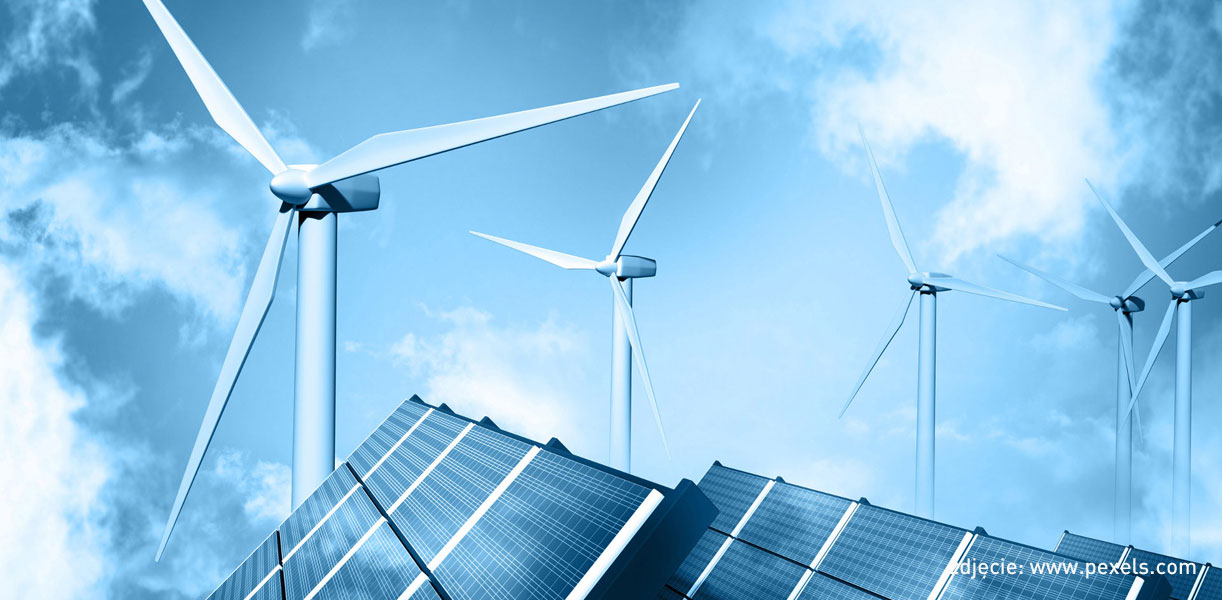In the first quarter of 2020, 29 new RES installations gained operational status in the auction system. Energy sales began, among others first installation launched based on recent auctions. The first new agricultural biogas plant also began to settle accounts in the settlement system.
At the end of 2019, a total of 406 new installations with a total capacity of 358.9 MW began to generate energy in the auction system. This means that, compared to the end of 2018, 262 sources with a total capacity of about 234.4 MW came last year. Most new capacity is the result of the second wind and solar auction in a basket of up to 1 MW, carried out in mid-2017, which resulted in the launch of 319 solar installations with a total capacity of 274.4 MW and two wind farms with a total capacity of 1.7 MW.
According to the Energy Regulatory Office, the total number of new installations that started energy production in the auction system increased during the first quarter by 29 – to 435, and their capacity increased by 25,246 MW – to the level of 384.146 MW. Of these, the largest – 427 – were solar installations, and their number compared to the end of 2019 increased by 27. Their total capacity increased to 372.281 MW, which gives an average power of 0.871 MW per project. In the ranking at the end of March, the Energy Regulatory Office increased by three, to 322, the number of solar installations completed after the 2017 auction. In addition, over the past quarter, 23 installations launched based on the 2018 auction have arrived. Their number increased to 42. In addition, URE notes the first solar installation launched as a result of the December 2019 auction – it is a PV system with only 26 kW.
Over the last quarter, the number of wind installations increased by one. Earlier, the Energy Regulatory Office informed about one launched wind farm as a result of the 2016 auction, two created after the 2017 auction and one after the 2018 auction. Now the Office has increased the number of turbines launched as a result of the first auction to two. In addition, URE notes at the end of March two new hydropower plants with a total capacity of 6.716 MW, which were built after the 2018 auction and were already on the URE list at the end of December 2019.
In the auctions carried out in 2016-2019, support was provided for a total of over 2,000 installations – including existing installations that have moved to the new settlement system from the “old” system of green certificates. The total value of energy covered by the winning offers was over PLN 38 billion. Almost 154 TWh of electricity was sold.
Of which, as a result of the 2016 auction, the value of energy sold amounted to PLN 1.12 billion, in the 2017 auction it was PLN 1.88 billion, and a clear increase in the value of energy sold took place in auctions from 2018, when energy was sold in total for PLN 14.22 billion, and also as a result of the latest auctions from 2019, when energy was sold for PLN 20.58 billion, most of which was allocated to wind farms in the wind and photovoltaic basket for projects with a unit capacity of over 1 MW.
Existing installations – migrating from the ending system of certificates of origin – from the pool allocated to them worth over PLN 46 billion managed to manage just over PLN 1 billion, which is just over 2 percent. the total value of electricity so far intended for sale by auction.
As estimated by the Energy Regulatory Office, as a result of the resolution of previous auctions, approx. 3.4 GW of new capacities in wind technology, approx. 1.7 GW in PV technology and less than 70 MW of new capacities in other RES technologies may be created. ERO notes the evolution of the auction settlement method. In the auctions carried out in 2016 and 2017, the participants who offered the lowest sale price won – until the quantity or value of this energy specified in the auction announcement was exhausted. The amendment to the Act of 2018 introduced the so-called competition enforcement rule.
Pursuant to this rule, the auction is won by participants who offered the lowest energy sale price and whose total offers did not exceed 100 percent. value or amount of energy specified in the auction announcement and 80% the amount of electricity covered by all offers submitted. Such a record is to avoid a situation in which all bids win the auction, even if the amount or value of electricity submitted bids does not exhaust the entire volume or values indicated in the announcement.
For offers won in 2017, the average price was 372 PLN / MWh, in 2018 it was only 352 PLN / MWh, and in 2019 – 317 PLN / MWh, which can be explained by a greater share of wind farms, for which investors they offered energy at prices even below PLN 200 / MWh.
In the context of new auctions, it is not yet known when they will take place. The government adopted a regulation determining the value and volumes of energy that can be sold in auctions in 2020. According to its content, this year’s wind and photovoltaic auctions for projects with a capacity of over 1 MW are forecast to purchase energy from wind farms with a capacity of up to 800 MW and from 700 MW solar farms.
In addition, in the basket for wind and PV up to 1 MW, according to the ordinance, all support is to be collected by photovoltaics and it is forecasted to guarantee sales of energy from PV power plants with a total maximum capacity of 800 MW.
The support will also cover new hydroelectric plants above 1 MW – with a total capacity of 20 MW, hydroelectric plants with a capacity of up to 1 MW – in total per 10 MW, as well as agricultural biogas plants with a capacity of over 1 MW – per 20 MW, other biogas plants with unitary capacity up to 1 MW – for 10 MW, as well as dedicated biomass combustion installations with a unit capacity of over 1 MW – with a total maximum capacity of 100 MW.
In addition, it is planned to sell the volume of electricity generated in existing installations using exclusively agricultural biogas to generate electricity from high-efficiency cogeneration with a total installed electrical capacity of more than 1 MW. This is to enable the transition from the system of certificates of origin to the auction support system for a total of 39 existing biogas installations with a total capacity of up to 59 MW.
The dates of this year’s auctions are not announced yet. It is also necessary to have a government regulation setting reference prices, maximum prices for energy that investors will be able to offer this year for particular production technologies.



